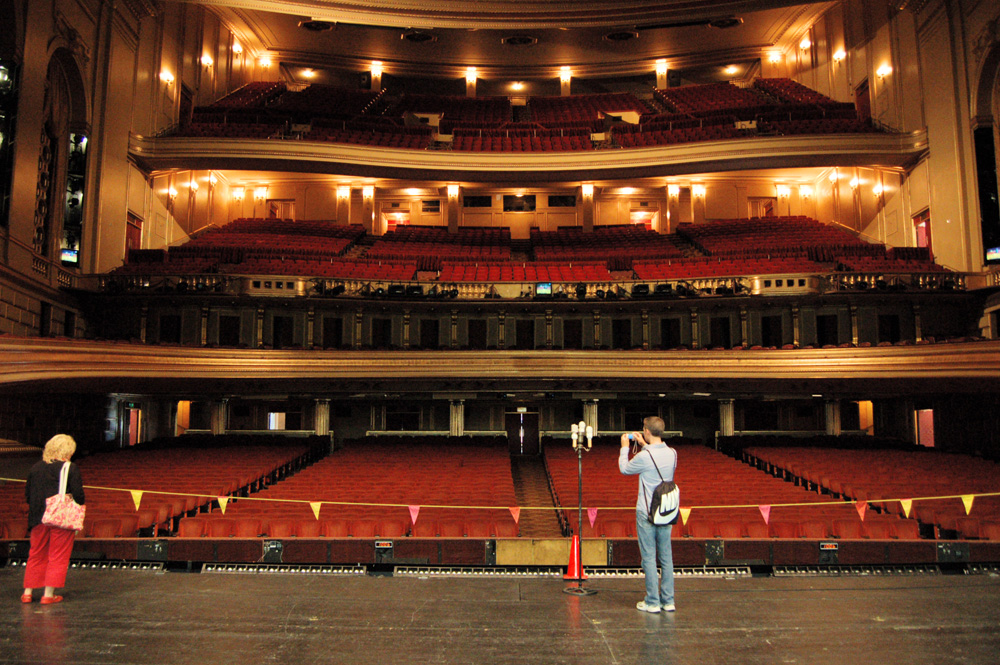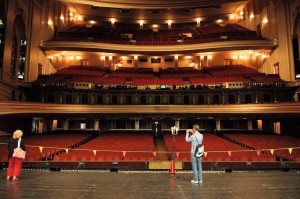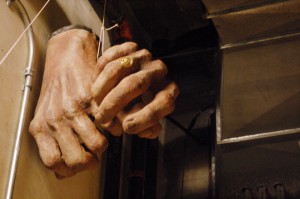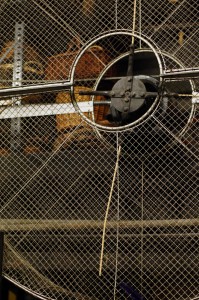Imagine The Phantom of the Opera without the chandelier, the organ, the boats, or the mirror. Imagine Les Misérables without guns or the breakaway chair. Imagine other shows without the props. These are all shows that have won Tony Awards for their Set Designs. But what would they be without the props?
First, let us consider why there is no props or props design categories in awards ceremonies. Historically, props have been the realm of the set designer. In addition to walls and floors (and sometimes ceilings), the set designer is responsible for describing and designing all the props. Though the actors may request them, or the director finds he or she wants them, or the stage manager discover a need for one, the set designer has the first and final decision on the “look” of the prop. Of course, the prop master is frequently finding all the possible options, and in the end, the set designer is merely choosing between the two or three options which the props master has presented. Also, many set designers do not go into nearly enough detail that the props master doesn’t find him or herself filling in the gaps. Sometimes the hardest job can be taking a thousand possibilities and turning them into a single reality. Some set designers love to give the props master a stack of research images to serve as design “inspiration”, which forces the prop master to do all the legwork.
In many modern settings, the set designer is far too busy to deal with the minutia of all the various props in a production. It often falls to the first or even second assistant to research, design and draft the furniture and special hand props. Many times, a prop master will deal solely with one of the assistants through the entire process to hone the selection of all the props. Even with the undivided attention of an entire assistant, the prop master is still forced to make many design decisions.
Some productions have begun recognizing the need for a distinct props designer. Otherwise, the props remain lumped within the set design purview, even when their design is undertaken by completely separate people. There remain shows where “set design” encompasses the designing of the props; in other cases, keeping the two together makes as much sense as combining architecture and interior design. Sound design used to be undertaken by the second assistant in the lighting department; it has since broken apart and is now recognized as its own discipline with its own category at most awards ceremonies. Props is far older than sound design. In fact, it predates the idea of a “scenic designer” in most cultures and theatre traditions. You can do Hamlet without scenery, but you can’t do it without a skull.
A year after the Tony’s were founded, they introduced an award for Best Stage Technician. In 1950, Joe Lynn won a Tony for his work as master propertyman on Miss Liberty. The last award for this category was given in 1963. Joe Lynn remains the single props person to have won a Tony in its 63 year history.
Most of the other New York-based theatrical awards are equally deficient in their recognition of props and prop design. The Drama Desk Awards, the Drama League and the Outer Critics Circle all neglect to include props as a category. In 2004, Faye Armon was recognized as part of the design team for Bug, becoming the only person to win an Obie for props. She is, arguably, only the second New York props person to ever be awarded for her work.
Other cities and regions are similar in their non-recognition of props design. The Drammy Awards began in 1979 to recognize Oregon theatre. In 2006, they awarded Andy Berry for Properties in Underneath the Lintel. The Acclaim Awards in Cincinnati began in 2006.  They gave an award for Properties to Shannon Rae Lutz in 2010 for Great American Trailer Park Musical. These are the exceptions to the rule, however.
Neither Chicago’s Jeff Awards, nor Los Angeles’ Drama Critics Circle Awards recognize props or props design. The South Florida Carbonell Awards, San Francisco Bay Area Theatre Critics Circle Awards, Boston’s Elliot Norton Awards, San Diego’s Craig Noel Awards and Washington DC’s Helen Hayes Awards are equally remiss in their recognition of the value of props to a theatrical production.
I can go on – and I will; The Barrymores in Philadelphia, Boston’s IRNE Awards, the Ivey Awards in Minneapolis, the Henrys in Colorado, and St. Louis’ Kevin Kline Awards follow the trend set by the Tony’s by not giving awards to prop designers. This is not unique to the United States;  The Laurence Olivier Awards, London’s equivalent to the Tony’s, does not give awards to props or any theatre technicians either.
So my question to you is this: should there be a Tony Award for Props? Why or why not?




